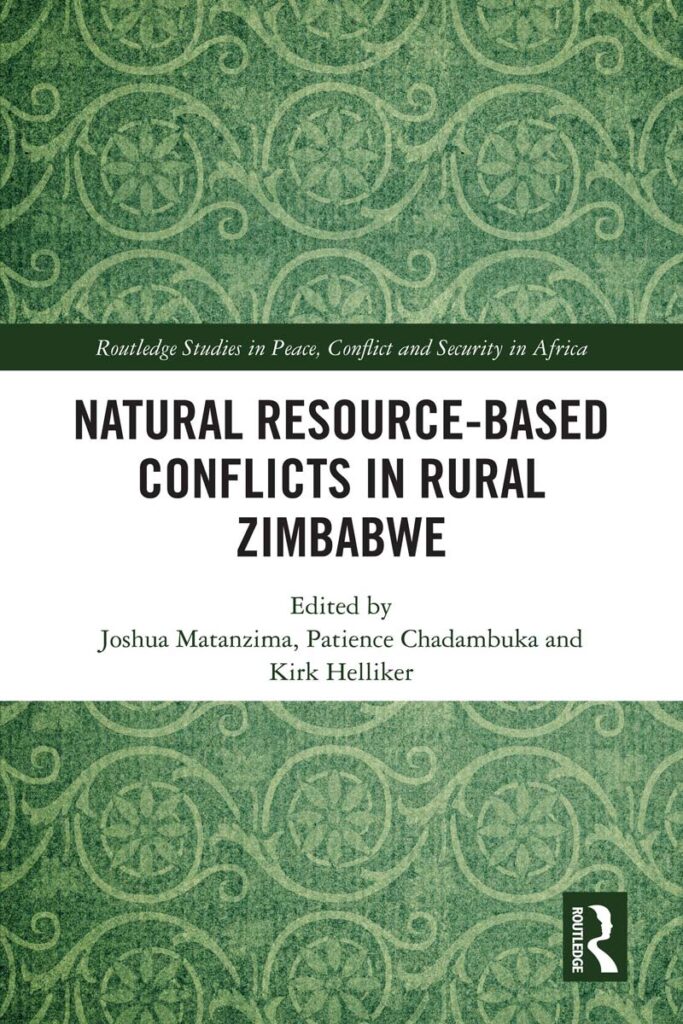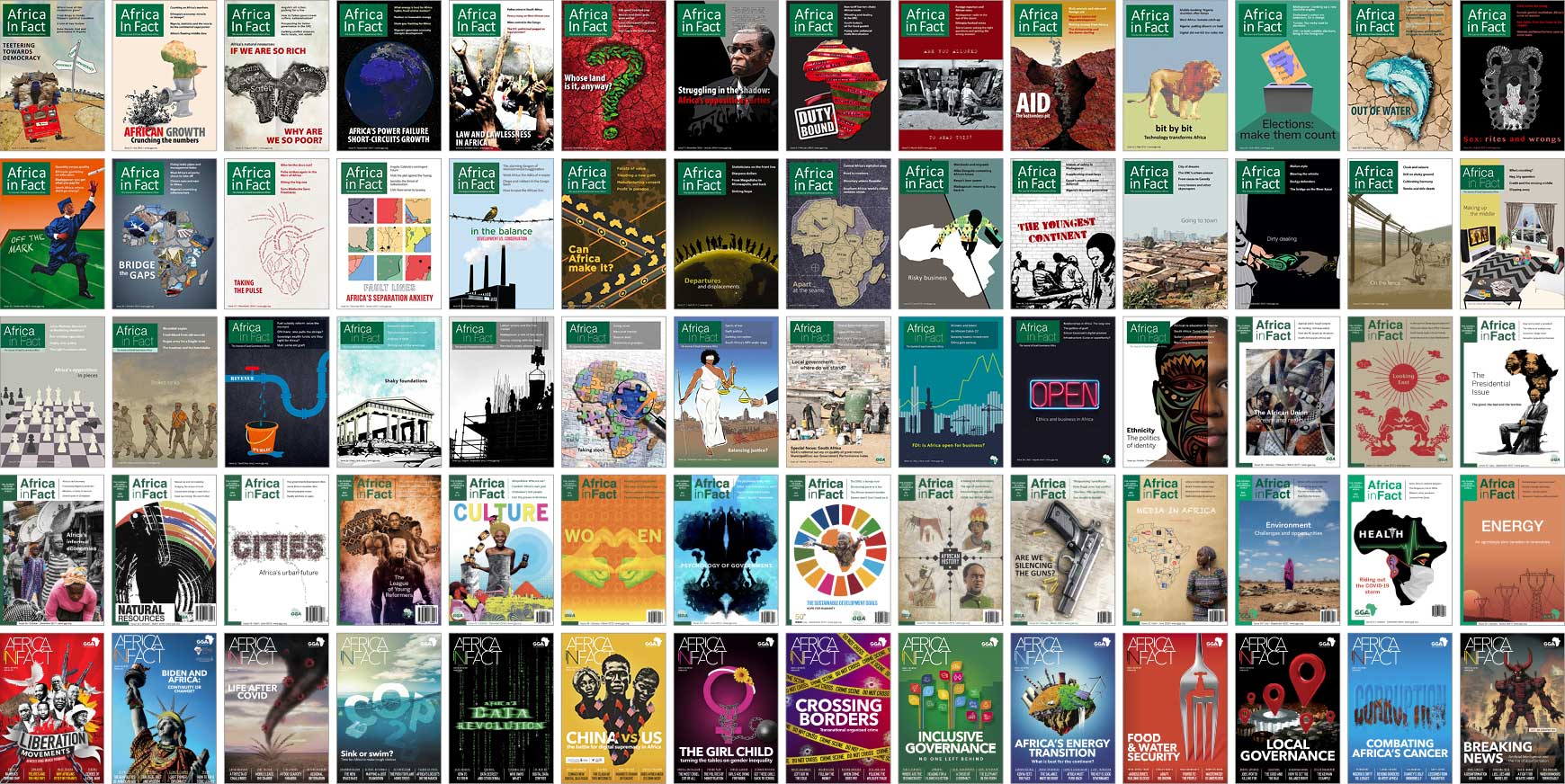Natural Resource-Based Conflicts in Rural Zimbabwe, edited by Joshua Matanzima, Patience Chadambuka & Kirk Helliker, Routledge – Taylor & Francis Group (2024)
Natural Resource-Based Conflicts in Rural Zimbabwe discusses complex and fluctuating conflicts relating to natural resources by highlighting specific cases from diverse agrarian sites in different regions of the country.
Zimbabwe is a country rich in natural resources, including land, wildlife, and water. These resources are integral to the formal and informal livelihoods of most Zimbabweans, as well as supporting many key industries.
Wildlife, land and water resources are also embedded in indigenous knowledge systems, religious beliefs, and rituals in rural communities, forming an essential part of people’s identity and sense of belonging.
Central to the issue of conflicts is the impact of displacement in colonial times, i.e., pre-independence in 1980. Through each case study, the contributors to this book show how displacement and conflicts negatively affect individuals, communities, wildlife, and the environment. The effects range from immediate disruptions to long-term consequences, affecting livelihoods, health, social structures, and access to resources.
For instance, the book examines the multiple contestations over nature-based resources between the Doma people in the mid-Zambezi valley and conservationists in the region. These include claims to land and natural resources, foraging for nature-based resources, illegal hunting by the Doma, human-wildlife conflicts, and the Doma’s occupation of wildlife corridors.
The Doma people, a minority ethnic group, were forcibly relocated from their ancestral home in the Chewore Safari Area to Chapoto Ward in northern Zimbabwe.
Initially moved by the Rhodesian government in the 1970s for helping freedom fighters cross into Zambia, they were later relocated again in the post-colonial period to make way for the establishment of protected areas and conservation initiatives. These displacements disrupted their livelihoods, identity, and sense of belonging.
Foraging for nature-based resources, which has always been part of the Doma’s cultural traditions and values, clashes with the interests of conservation authorities, namely, the Zimbabwe Parks and Wildlife Management Authority (ZimParks) game rangers, safari operators, anti-poaching units (APUs), the Mbire Rural District Council (RDC), the local councillor and the chief (the councillor collaborates with the chief to enforce the RDC’s conservation by-laws).
Investigative interviews conducted regarding the conflicts record an official of the Mbire Rural District Council emphasising that park rangers should acknowledge that local people help conserve wildlife and must therefore be protected against wanton harassment by conservationists.
Also featured in the book are conflicts along the waterscapes of Lake Kariba.
Kariba was built for electricity generation in the 1950s, and through the construction of the dam, white farmers controlled, managed and monopolised water by channelling it in their direction, depriving communities in the process.
Construction of the dam also led to the displacement of indigenous people, specifically the Tonga, Shangwe and Korekore, which in turn created conflicts around, for instance, religious access to and use of waterscapes.
But, although mostly framed through a religious lens, the water conflicts are also economic; the different ethnic groups need to acquire resources from the lake and use the revenue to develop their underdeveloped zones.
Moreover, while religious access is granted at Lake Kariba, in the eyes of the Tonga and Shangwe, it is being granted to the wrong people, the Karanga, who do not belong there.
The book identifies such conflicts as murmurs of the disenfranchised, in the sense that they form part of the everyday language among the village elders and traditional leaders and can lead to acts of sabotage.
The book also looks at conflicts between various players in the small town of Norton, the regional home to Lake Chivero and Lake Manyame, revealing conflicts between fishers and local officials as well as registered cooperatives and unregistered fishers, known as fish bongas.
Many cooperatives complain that the fish bongas usually carry out their fishing operations clandestinely, at night, in spaces designated for cooperatives, which leads to violent clashes over access rights.
To counter poaching, most fishing cooperatives have resorted to establishing temporary fish camps along the lakesides to help ZimParks officials monitor illegal fishing activities.
Similarly, conflicts over the theft of fishing nets and catches cause intra-cooperative conflicts over territorial access to strategic fishing spots and marketing spaces.
According to respondents interviewed, the emergence of syndicates has contributed to disputes within cooperatives, as some syndicates form alliances within cooperatives. The syndicate system also leads to overcrowding and the depletion of fish resources (because syndicates disregard the ZimParks legislation, which limits boat usage), as well as other environmental issues like water pollution, which puts additional pressure on lake ecosystems and threatens the sustainability of fishing practices.
Some conflicts are gender-based. An analysis of these disputes in Hwedza, a district in the province of Mashonaland East, indicates that a lack of knowledge of the law is the main factor inhibiting women’s equal access to land.
Despite legal provisions for gender equality in the Zimbabwean Constitution (even when applying customary law), women’s rights are dismissed on a “cultural basis”, at times with the approval of the traditional leadership. Many believe that gender equality is a “white man’s law” with no place in traditional customs or cultures.
As one female respondent poignantly noted, “It is hard to be a female child; even if your parents leave land for you, male relatives can chase you away from that land at any time.”
Resolving the numerous conflicts highlighted in the book is undoubtedly a painstakingly slow process that requires the involvement of various institutions.
Intervention initiatives include the Communal Areas Management Programme for Indigenous Resources, known as CAMPFIRE, which aims to balance wildlife conservation with economic benefits for local communities from tourism revenue. It operates on three principles: empowering local communities to manage natural resources, enabling them to make decisions about resource use, and ensuring they receive benefits from resource exploitation. Despite making progress in reducing conflicts, CAMPFIRE still faces challenges, including external involvement that often overlooks the cultural significance and traditional practices of indigenous communities.
From a legislative perspective, the Environmental Management Agency (EMA) – which operates under the Ministry of Environment, Climate, Tourism, and Hospitality Industry – specifies environmental rights and principles for environmental management and resource use, which include promoting the participation of all affected parties in environmental governance.
Regrettably, the EMA still faces resistance in communities. For instance, in Zimunya, located in the region of Manicaland, tensions over access and utilisation are becoming salient between communities and EMA, as the younger generations convert environmentally delicate areas such as riverbanks and wetlands into market gardening areas to earn a living, exacerbating the impact of climate change, which results in prolonged periods of drought that further damage wetlands and rivers.
Communities view the enactment and enforcement of environmental regulations as an unwarranted encroachment on resources they have successfully managed for generations.
The book demonstrates that to manage conflicts, continuous collaboration between various governing bodies, communities and their leaders is imperative.
The successful regulation and monitoring of natural resources can only be achieved if efforts are made in partnership with all stakeholders while enforcing punitive measures to prevent the abuse of wildlife, land and natural resources.
This book is useful for policymakers, students, conservationists, and academics across the fields of sociology, cultural anthropology, human geography, development, political science, and environmental studies.

Sarah Nyengerai is an academic and freelance writer based in Zimbabwe with a strong passion for social, cultural, economic and political issues that affect women. She believes literary works form the foundation for the dialogue required to sustain momentums of change and aims to bring attention to such matters. A member of NAFSA (Association for International Educators) and Forum for African Women Educationalists (FAWE), Sarah is actively involved in the advancement of education for women.



